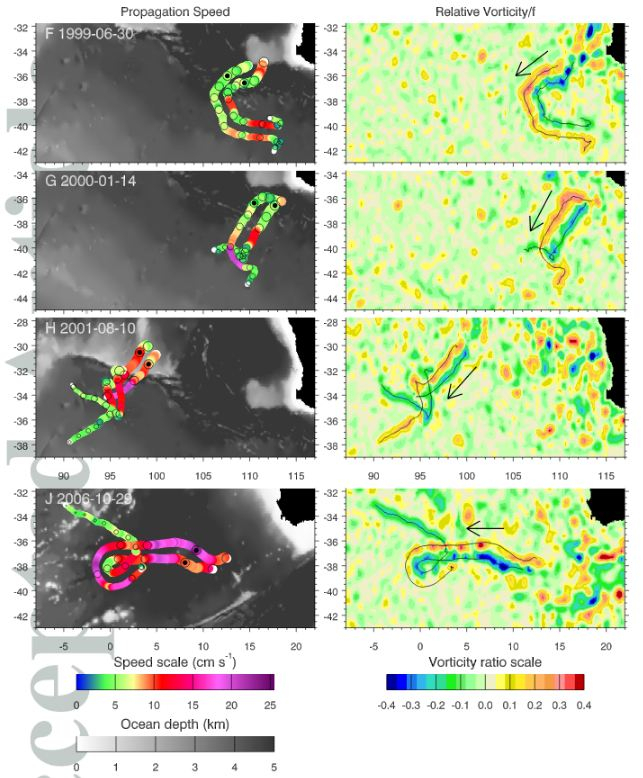
Researchers have found double whirlpools, which look like smoke rings, in the oceans in the South Atlantic region. It has been observed that these smoke-rings or modons are actually swirling eddies which are capable of sucking in small marine creatures and disturbing the flow of water in oceans.
According to the study, these double whirlpools are actually a pair of eddies linked to each other but spinning in opposite directions. Their swirling motion creates a current that can attract objects to its centre. They were spotted majorly in the Tasman Sea, southeast Australia and west of South Africa.
As the two rings in the ocean are divided by the sea surface, only two ends of the half rings are visible, making it look like smoke from space. They were discovered after analysis of sea level measurements and surface temperature images from satellites.
The study, published in Geophysical Research Letters, has stunned scientists as something like this has been observed for the first time in the world. They also show movement different from the way ocean eddies usually behave.
"Ocean eddies almost always head to the west, but by pairing up they can move to the east and travel ten times as fast as a normal eddy, so they carry water in unusual directions across the ocean," says Professor Chris Hughes, lead author of the study. The paper has been co-authored by Peter Miller from the Plymouth Marine Laboratory, UK.

These whirlpools can pull in marine creatures and carry them to far off distances at a high speed. They need a mass of calm water to 'puff' through, which is not easily present in oceans. However, they have been spotted in the oceans around Australia and the South Atlantic. Hughes has said that these double whirlpools take about six months to travel all the way across the Tasman Sea.
The possibility of paired eddies existing had been predicted by scientists and mathematicians in the 1970s but their practical existence has been discovered for the first time.
Eddies are useful in the marine ecosystem as they contain water of a different temperature than its surroundings. Their nutrient content is also different. However, the speed and movement of these eddies often lead to loss of phytoplankton and other sea creatures' lives, thereby reducing their population.
Check out this video about half-ring vortices in a pool to get an idea what the double whirlpool might look like:









